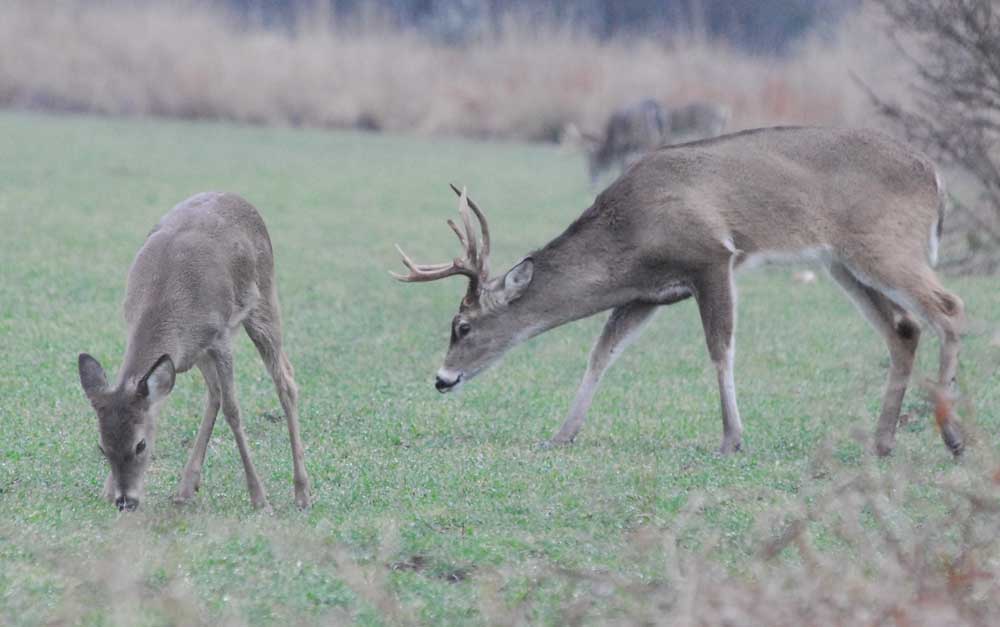On the Rise: Eastern Texas deer numbers have steadily climbed
Published 11:00 am Friday, October 11, 2024

- An increasing deer population in the Pineywoods and Post Oak Savannah regions of East Texas means more opportunity for deer hunters. (Steve Knight/Tyler Morning Telegraph)
When it comes to deer hunting these are the good old days in eastern Texas, and for that matter, most of the state.
The regular season opens statewide Nov. 2, and while the situation is different from pasture to pasture, deer numbers in the Pineywoods and Post Oak Savannah regions are as high as they have been in modern times. The same can probably be said for the entire state.
Trending
“If we’re looking at long-term trends, every ecoregion has a much higher deer population than 20 years ago, with the statewide population increasing by approximately two million white-tailed deer over that time,” explained Blaise Korzekwa, Texas Parks and Wildlife Department’s white-tailed deer program leader.
Stretching from the Red River to the Gulf Coast in the far eastern part of the state, deer were near-extinct in the Pineywoods’ region prior to restocking efforts by TPWD beginning in the 1940s. The region’s population continues to play catch-up, but is improving.
“Overall, the Pineywoods has a lower deer density than other parts of the state, but has been steadily increasing in recent years and has drastically increased from several decades ago. Habitat loss and unregulated hunting in the early 1900s led to a nearly decimated deer population and restocking efforts took place. Now, proper habitat management and support from hunters has created a stable population of white-tailed deer that provides quality hunting opportunities,” Korzekwa said.
Since 2018 TPWD deer surveys indicate the region’s deer population is up almost 60,000 to an estimated 331,000. However, there is only a deer per 43 acres in the Pineywoods. That compares to one per 23 acres in the neighboring Post Oak region and one to 13 acres in the heavily population Edwards Plateau.
With an estimated 654,000 deer going into this season, the Post Oak region has the third largest deer population behind the Edwards Plateau (1.5 million) and Cross Timbers (755,000) regions, and ahead of South Texas (605,000).
“The deer population there has remained relatively stable over the last five years, but is up approximately 25 percent from a decade ago,” Korzekwa said.
Trending
The biologist said the Post Oak population swings up and down more than the Pineywoods region because it is more susceptible to drought. Going forward the Post Oak deer herd also faces another issue.
“Similar to other ecoregions, this area is experiencing rural growth and housing developments. I’d expect the deer population to remain steady over the next several years, but localized areas may experience an increase in deer density due to habitat loss and deer movements from surrounding areas,” Korzekwa said.
The growth in population in the two regions has led to an extended antlerless season this year running from opening day through Dec. 1
Thanks to a wetter than normal spring and early summer deer hunters in eastern Texas can expect good quality going into the season.
“With the factors we were delt this year, I expect to see some really good quality deer harvested in the Pineywoods again this year. As for the fawn survival, I am expecting average to slightly above-average across the area. Across the region the age structure is in good shape, but on the more local level some areas are better than others for various reasons,” said Randall Kroll, TPWD senior wildlife biologist for the region.
Spring rains are generally considered good for deer, but this year there was too much in some areas resulting in mixed results.
“This amount of rainfall came with benefits as well as some disadvantages. The disadvantages included localized flooding and exposure. Flooding and exposure could lead to mortality, especially in fawns, deer displacement, and reduced understory vegetation along waterways. The benefits include relatively cooler temperatures and ample vegetation for forage and cover. With better quality habitat we often see better antler production,” Kroll explained.
Hunters in the Pineywoods could be slowed early in the season because of a good mast crop.
A mild, wet spring should also help deer in the Post Oak region.
“Overall, the wet spring and mild conditions, compared to the past few years, should help with an improved fawn crop and antler quality in bucks. The nutrition that deer get from browse forage in spring and summer directly reflect on fawn crop and antler growth. So, the more quality forage on the landscape during those times, the better both will be in most cases,” said Chris Keiser, TPWD district biologist.
Keiser said even though the rain turned off in August there was enough quality forage remaining that it should not have a negative impact.
Unlike the Pineywoods, Keiser said mast production may be more iffy in the Post Oak.
“Acorn production has been fairly high the past two years in certain parts of East Texas so the possibility of a reduced crop to get it back to an average year very well may happen. We really don’t know until the acorns start dropping,” he said.
The department is confident that a longer antlerless season will not have a negative impact on the herd in eastern Texas.
“With expanded opportunities it gives hunters more time to fill their tags. However, more opportunity doesn’t always mean more harvest. Many people only shoot one deer a year regardless of whether they have two weeks or two months to fill those tags. In saying that, harvest may go up, but we wouldn’t have made the decision to expand doe days if we thought that it would adversely affect the population as a whole. We expect that the deer herds will stay stable even with this expanded hunter opportunity,” Keiser said.







